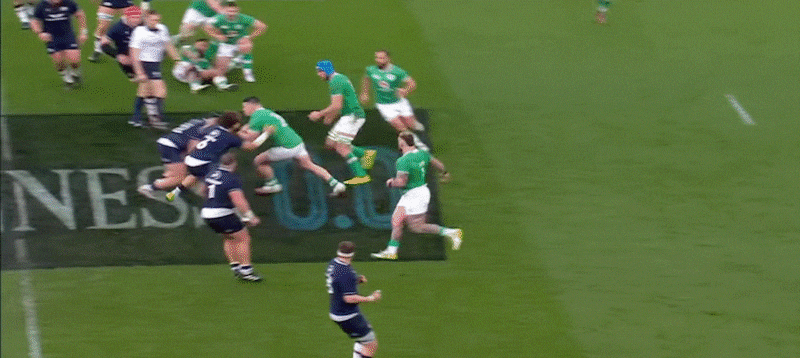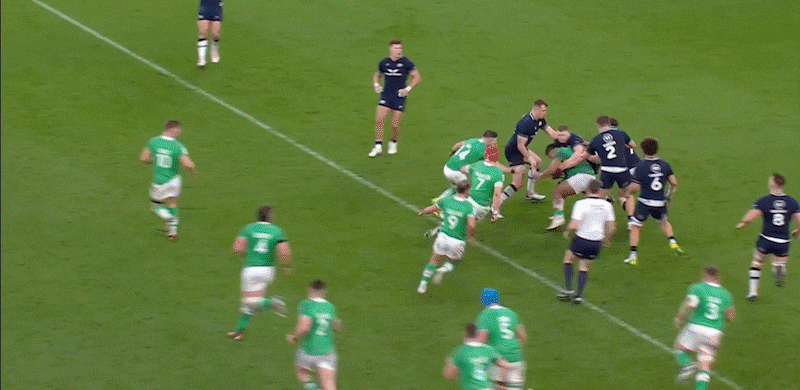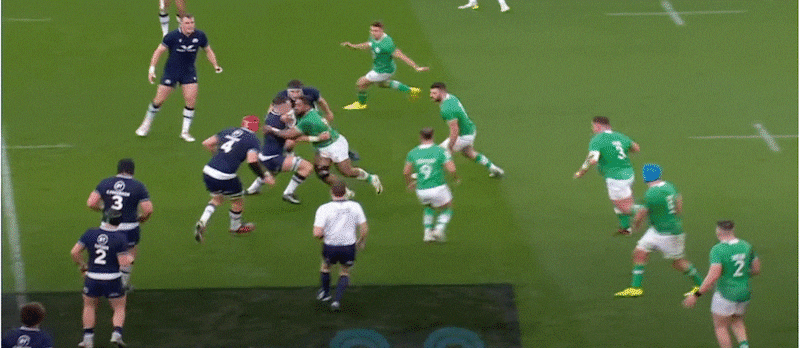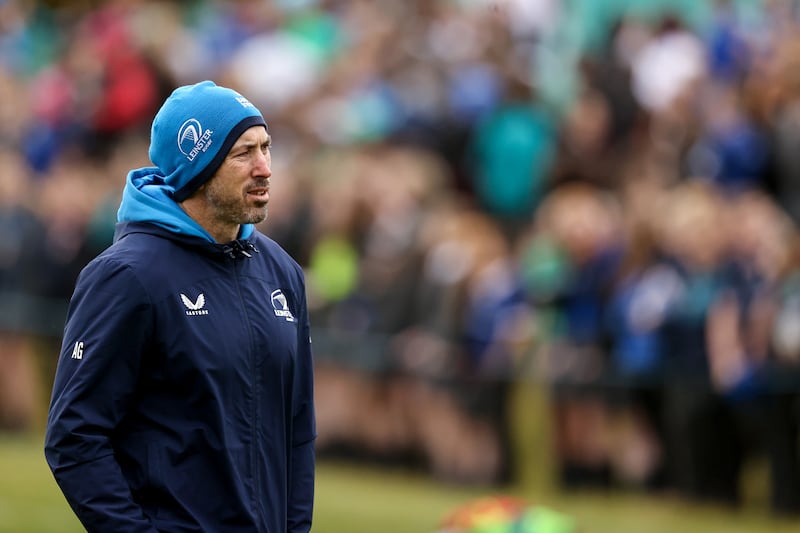Charles Darwin wasn’t talking about Ireland’s attack when he said that only the most adaptable beings, rather than the strongest, survive, though he may as well have been. In 2019, when teams figured out how to stop Ireland’s attack, they couldn’t adapt in time to avoid a disappointing World Cup.
Andy Farrell was on that coaching ticket under Joe Schmidt. Now it is his responsibility to ensure that history does not repeat itself.
One of Farrell’s first moves when promoted to head coach was to hire Mike Catt. Ireland’s attack was duly equipped with more layers and complexity. It took time to bed in, but from the end of the 2021 Six Nations onwards, Ireland began terrorising defences.
After a number of years of analysis, teams haven’t completely figured Ireland out, but there are indications that it may still be time for the second evolution of the Farrell era.
RM Block
Statistically, Ireland’s attack is still top of the tree in nearly all facets. The most important number, the one on the scoreboard, is healthy. Ireland scored the most points (144) and tries (19) of any side in this year’s Six Nations.
They were also top for metres gained (2,217m) and line breaks (36) and second for 22 entries (47). Under the tutelage of forwards coach Paul O’Connell, Ireland had the highest rate of rucks lasting fewer than three seconds (56 per cent). They also had the lowest rate of breakdowns lasting longer than six seconds (12 per cent).
To what extent were these numbers inflated by Ireland’s fast start to the competition? The performance against France was arguably their best, with that level not consistently matched thereafter.
In Twickenham, Ireland were starved of the ball and their metres-made and line-break figures duly dropped. Scotland opted for a different ploy to England’s blitz defence, failing to limit Ireland’s yardage but instead frustrating them on the scoreboard by forcing errors in the collisions and at the breakdown.
“What we all understand, teams that go up against Ireland, is they’re going to go through phases,” explained Scotland head coach Gregor Townsend. “You’ve either got to keep your connection while you’re being really physical in defence, and know that you’ll have to do that and not give penalties for offside for large periods of the game, aim to force an error. Or like England, you try to shut that down within two or three phases with aggressive line speed.
“Both are good strategies but [on Saturday] I thought Steve Tandy [defence coach] in particular can take a lot of credit.”

Scotland’s Andy Christie, a nuisance to Ireland’s attack when both slowing up and pilfering possession, made 28 tackles. That is the joint most by any Scotland player in any Six Nations match in their history. As Townsend said, Ireland take you through the phases.
After the victory on Saturday, Farrell offered an assessment of where Ireland’s attack struggled: “I actually thought, in the conditions, we weren’t as direct as what we should have been in the first half,” he said.
“Sometimes we parked up instead of getting around the corner. I think if you look at the first 10 minutes of that second half, when the forwards were coming around the corner and piling into them, it was very hard to stop.


“The answers are all there, you’ve just got to keep honing in on all that.”
Against England, Ireland were often physically outmatched by powerful defenders flying out of the line. Facing up to Scotland, at times they couldn’t power their way through the better-connected wall of navy jerseys. Scotland’s ploy of holding ball carriers off the floor also slowed down Ireland’s ball. They reacted well to referee Matthew Carley allowing tacklers plenty of time to release tackled players.

When it comes to physicality, fatigue has to be factored in, given the majority of this Irish starting XV hasn’t changed during a span of 11 Tests in six months.
Despite the success of the differing defensive methods, Ireland beat Scotland and lost to England by a point. Their attack is still one of the world’s best, but opponents have narrowed the gap.
On the playing front, new blood will gradually be introduced, to refresh physicality levels if nothing else. A new attack coach, Andrew Goodman, will also allow for rejuvenation of ideas. It is expected that he will travel with the squad on their tour to South Africa, though it remains to be seen in what capacity, with Catt still on board for his final tour before moving on.

Farrell won’t allow Ireland to stand still. Given their current attack only kicked into gear two years out from the last World Cup, it may be some time before we see the upcoming evolution leading to success. With 3½ years until the next World Cup, Farrell and Goodman have time on their hands.
What decisions they make could well define Farrell’s era at the helm.















